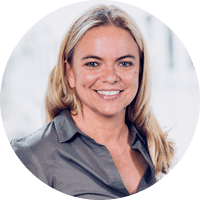

Garance Wattez-RichardHead of AXA Emerging Customers
January 18, 2022
How studying the finances of low-income households can help design adapted safety nets
By studying the financial stresses of the underprivileged at a household level, insurers can more effectively fill protection gaps and decrease health risks endemic to the financially insecure.
4 minutes
When faced with everyday risks – from a health emergency to property damage – low-income families, notably in emerging and developing markets, have few and expensive choices to make. While we have a view on the scale of poverty, we have yet to sharpen our image of the livelihoods of low-income families to design adequate programs. By studying the financial stresses of the underprivileged at a household level, insurers can more effectively fill protection gaps and decrease health risks endemic to the financially insecure.
We often talk about low-income life in numbers; for example, how many people in different countries live on $2 a day, or $5 a day and how those numbers evolve over time. In 2021, COVID-19 is estimated to have pushed as many as 150 million people into poverty with increasing numbers of urban dwellers joining the rural poor.[1] Yet, if we want to better serve the underinsured and design adapted solutions that meet the needs of low-income families, we need more than numbers. We need to understand how having very little affects behaviour and attitudes – that is, how families living close to the edge manage and where they go in times of need.
Stuart Rutherford, a Manchester-based social scientist, was one of the first researchers to turn the lens from macro to micro to understand, in his words, how the poor create strategies, weigh trade-offs, and seize opportunities
. He pioneered a research methodology that was intensively qualitative, zooming in on the basics of daily poverty by getting close to individual families in different communities, visiting them regularly and logging the details of their income, expenditure and life events in very detailed journals, otherwise known as Financial Diaries.
After Rutherford and his colleagues published their seminal publication, Portfolios of the Poor in 2009, a number of subsequent studies adopted the financial diaries methodology across industries. Within financial services, the research helped companies adapt products for low-income customers through improved understanding of how households with few resources manage those resources and where the biggest gaps exist[2].
The Financial Diaries studies of communities in Sub-Saharan Africa have given us rich insights into where low-income families fall into crisis. For example, by deprioritising non-urgent healthcare – regular check-ups, early interventions – health issues that may have started as inexpensive to treat, grow into a major life-threatening and financially expensive crisis. Families will save on tests and instead go straight to buying medication. Diagnostics and prevention are jettisoned in favour of crisis management. We call this a quality tax that disproportionately impacts those on low incomes. Poor healthcare provision delivered late tends to be both expensive and tragic.
The U.S. Financial Diaries[3] study replicated the methodology in the American context in 2015, surveying over 200,235 low-to-moderate-income households over a year. It showed that one in five encountered out-of-pocket health expenditure, with costs averaging nearly USD 3,000 over the year, and many more renounced medical care because of financial issues. The study helped identify one of the root causes: in a context of healthcare costs inflation, companies gradually provided blue collar workers with lower-cost health insurance plans with deductibles that more than doubled.
Access to healthcare is about more than insurance: it’s also about getting access to trusted medical advice that can help patients navigate the health landscape. It’s about education and health-seeking behaviours. Digital solutions are particularly good at reaching rural populations where there are no physical health services, but they have a growing part to play in delivering solutions for all communities wherever they are located.
Digital solutions may also be able to fill health gaps in middle-income countries like China. While 95% of the population has universal health coverage, the system is still fragmented, with coverage varying from cities to rural areas, and co-pays varying from 30-60% depending on geography and treatment[4]. Just like in Sub-Saharan Africa, low-income families in rural China may deprioritise non-urgent healthcare, worsening outcomes down the line. In light of these observations, institutions like the World Bank, and now AXA, are sponsoring Financial Diaries projects. These studies are already revealing that access to online consultations may improve healthcare seeking behaviour for minor health issues, which could help to prevent illness before it becomes severe.
Inclusive insurance takes the industry back to its core principle held by the very first mutual societies of 17th century England: insurance by the people for the people. If we can design simple and inexpensive solutions that take 30 seconds to explain, with no fine print, we will be helping lift millions of low-income families out of vicious cycles of under-protection.
The Financial Diaries has demonstrably helped shape the design of successful solutions both low-to-middle and high income countries. We need to be aware of widening wealth inequality and increasingly prevalent financial insecurity, and applying Financial Diaries methodologies could underpin a protection system that works for all.



